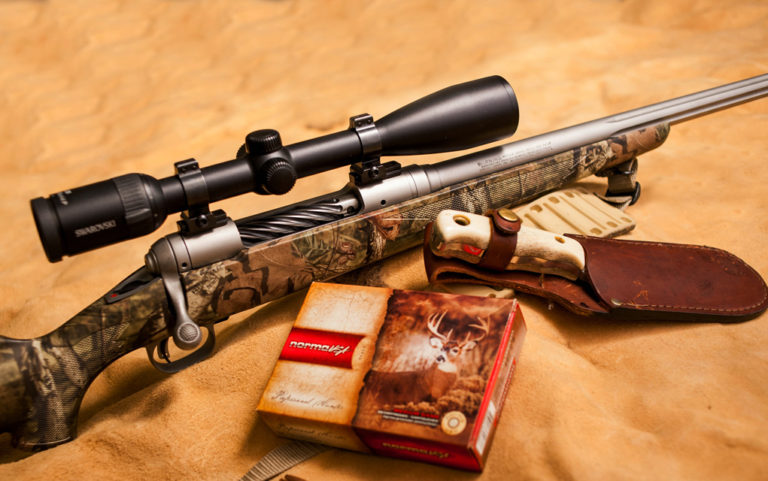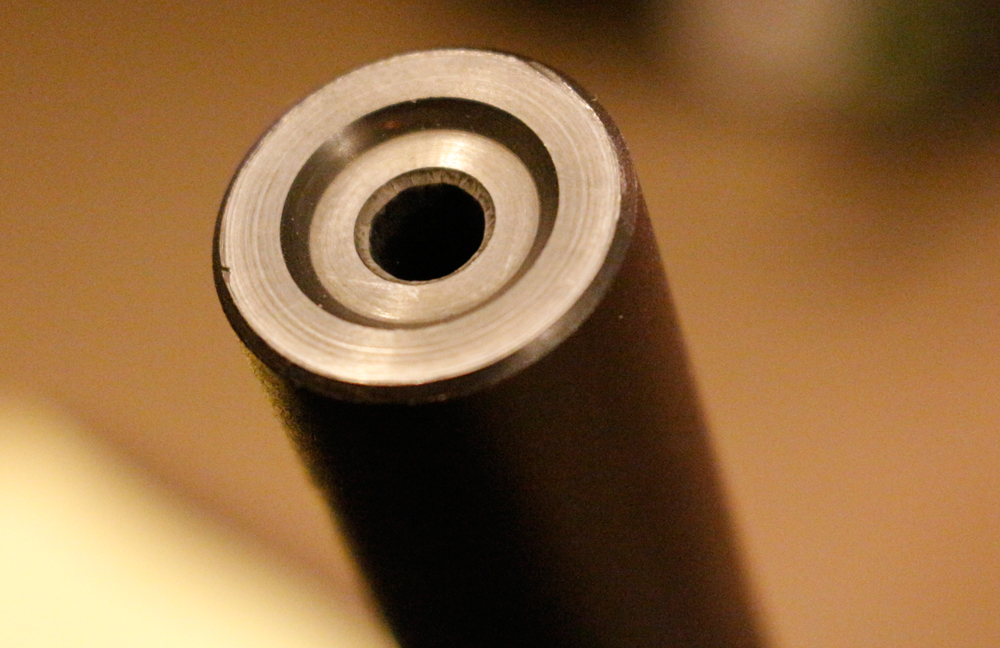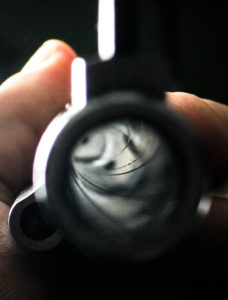

The manner in which a barrel whips, torques and contorts is referred to as “barrel harmonics.” The idea of accuracy is simply a set of repeatable barrel harmonics.

If you use the centerline of the bore as the baseline for your observations, you would see a wave in which the barrel would rise and fall, equally above and beyond the baseline. The thinner and longer a barrel is, the farther from the baseline the barrel will whip. Again, a short, thick barrel will have a much smaller deviation from the baseline. Accuracy is optimized when harmonics are repeatable, and when the various pressure waves align in such a fashion that the muzzle diameter is kept at a uniform dimension. Um, what? How can the muzzle diameter change? Allow me to explain a complicated theory in simple terms.
I ran across a theory, presented by radio communications engineer Chris Long, which makes a whole lot of sense and explains some ideas I knew to be true, but had no idea how to nail down scientifically. It also changed the way I look at my own handloaded ammunition. Long purports that a series of crossing waves can, will, and do have a great effect on the barrel and its ability to produce a repeatable point of impact (known to us as a tight group). While I am not a scientist (cue Star Trek music: “Dammit Jim, I’m a surveyor not an engineer!”) Long’s theory boils down to this: The ignition of the powder charge creates pressure that sends a shockwave down the barrel, to the muzzle and back again, in a repeating fashion much like the plucking of a guitar string. This ignition stress shockwave can and will move the steel enough to cause a distortion in the bore diameter. Subsequently, when the bullet engages the rifling, a second force — the swelling of the barrel ahead of the bullet — starts to travel toward the muzzle. According to Long’s sound theory, if those two waves collide when the first wave is affecting the muzzle, the groups will open up as if the crown were out of round. If you can find the load with which the two waves are separated, the group size will indeed shrink.

Now, there are many variables in Long’s equation, including the amount of powder and the load density, as well as the seating depth of the bullet, and while this isn’t a book on reloading ammunition, this theory makes perfect sense to me as a handloader. It can easily explain how changing the powder charge a mere 0.1 or 0.2 grains would so dramatically affect group size, as I’ve seen for decades in my own handloaded ammo. In addition, the Chris Long theory also explains why some barrels like a particular brand of ammunition, yet others can’t get it to work at all. I think it also explains the drastic changes in group size that can occur when changing seating depth and cartridge overall length. (Which incidentally has been a little trick of mine for years, though I didn’t understand exactly why it worked, I just knew that it did.) The variations in seating depth will definitely affect the barrel harmonics and their timing.
Editor's Note: This article is an excerpt from the Big Book of Ballistics, available at GunDigestStore.com.

Next Step: Get your FREE Printable Target Pack
Enhance your shooting precision with our 62 MOA Targets, perfect for rifles and handguns. Crafted in collaboration with Storm Tactical for accuracy and versatility.
Subscribe to the Gun Digest email newsletter and get your downloadable target pack sent straight to your inbox. Stay updated with the latest firearms info in the industry.

![Best Concealed Carry Guns In 2025 [Field Tested] Wilson Combat EDC X9S 1](https://gundigest.com/wp-content/uploads/Wilson-Combat-EDC-X9S-1-324x160.jpg)


![Best 9mm Carbine: Affordable PCCs [Tested] Ruger Carbine Shooting](https://gundigest.com/wp-content/uploads/Ruger-Carbine-Shooting-100x70.jpg)
![Best AR-15: Top Options Available Today [Field Tested] Harrington and Richardson PSA XM177E2 feature](https://gundigest.com/wp-content/uploads/Harrington-and-Richardson-PSA-XM177E2-feature-100x70.jpg)
